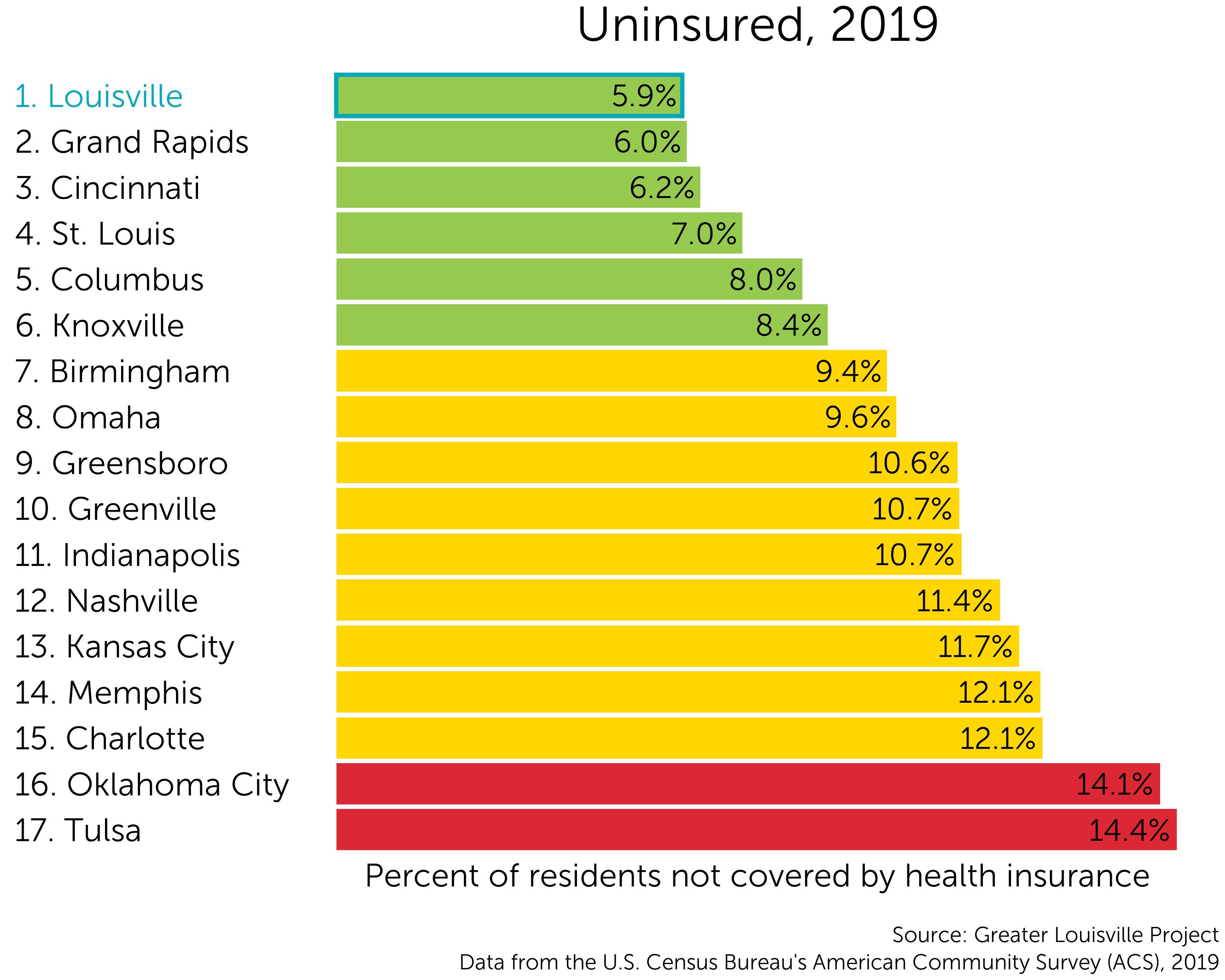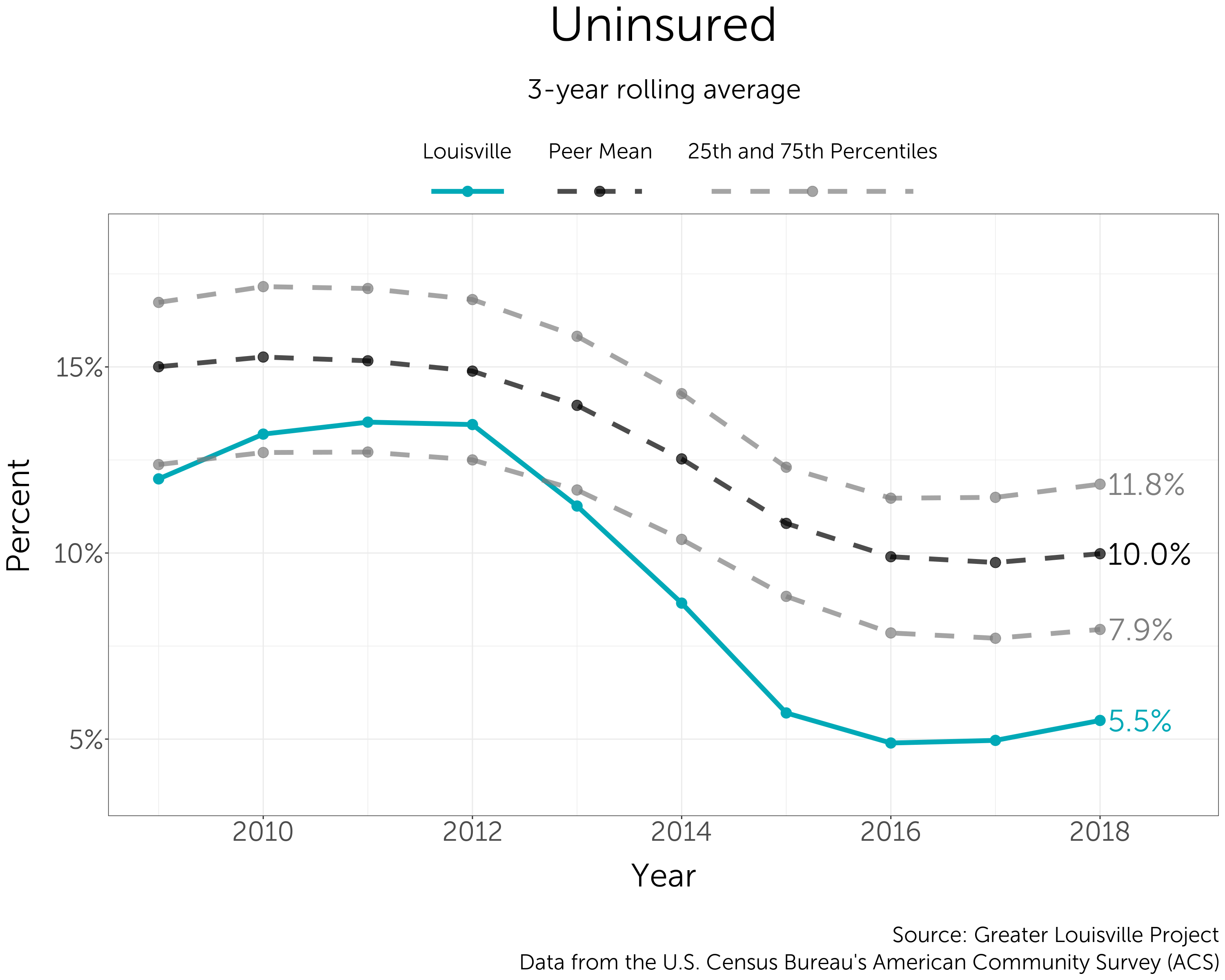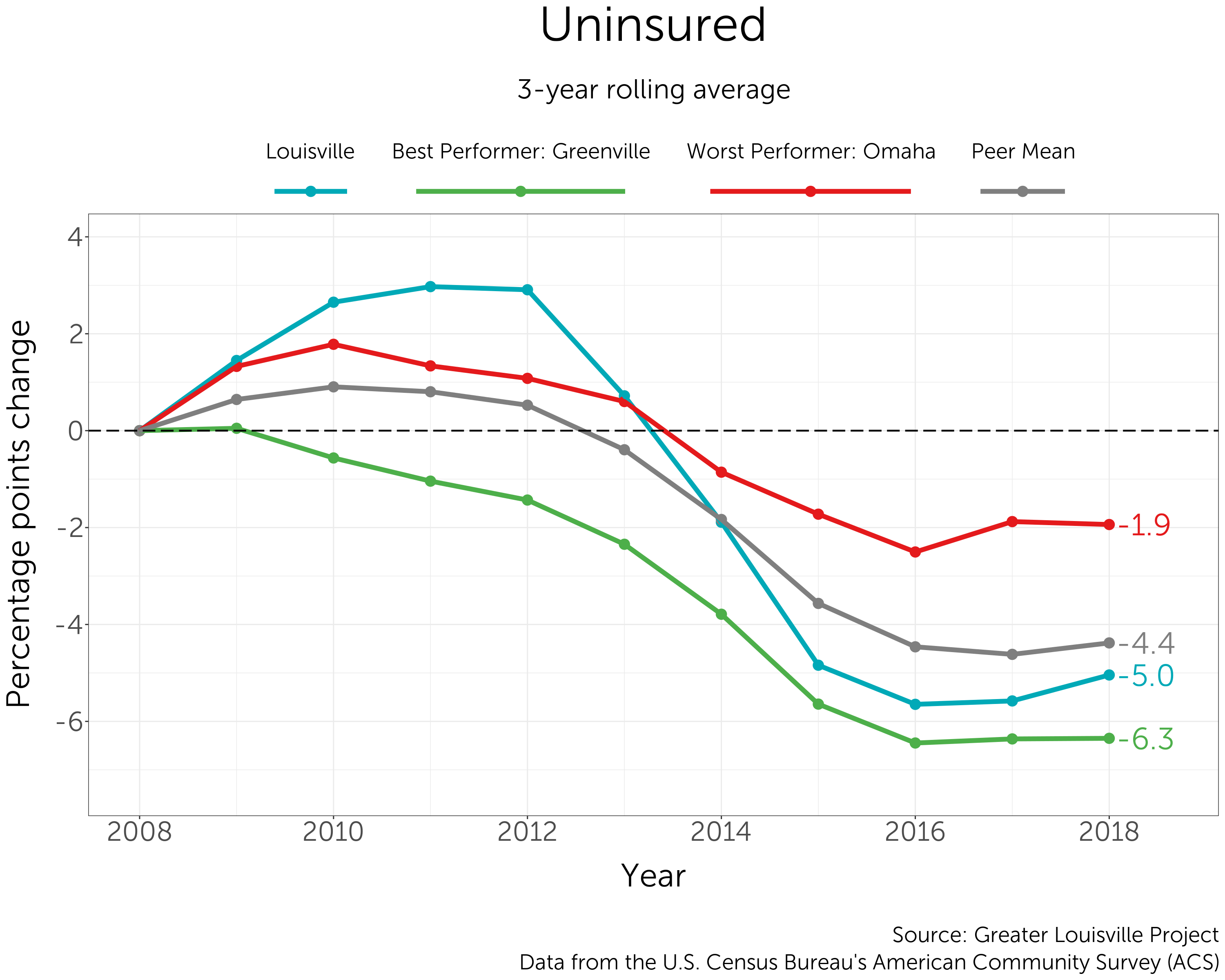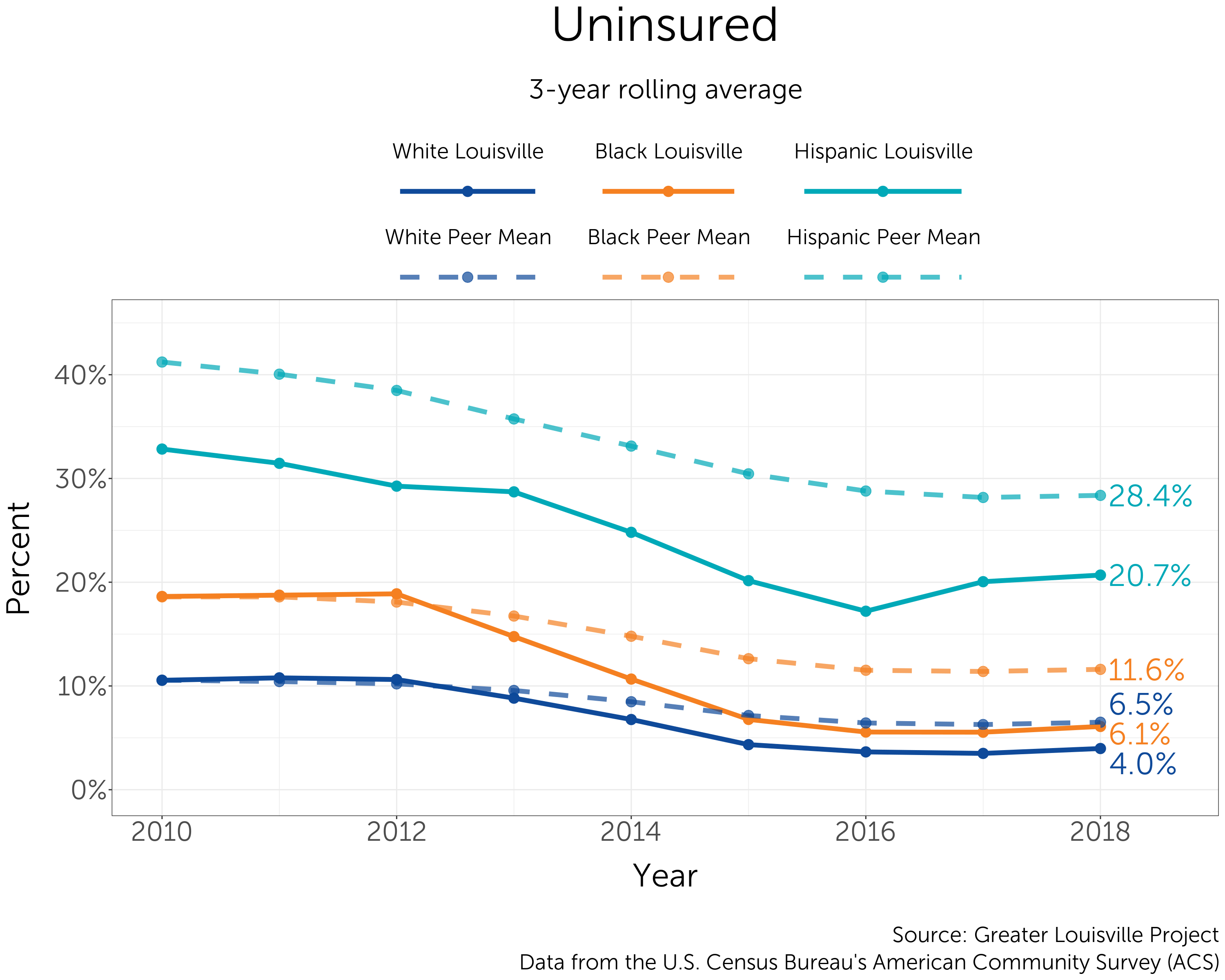Uninsured
Access to health insurance is a significant barrier to primary care access. As such, a community’s insurance rate is a sound indicator of its health infrastructure, including the accessibility of providers and services.
Access to health insurance is a significant barrier to primary care access. As such, a community’s insurance rate is a sound indicator of its health infrastructure, including the accessibility of providers and services.
Louisville currently ranks 1st among its peer cities in the percent of the population who are insured, with only 5.9% of Louisville residents being uninsured.
On this metric, Louisville ranks among the top tier of its peer group according to a natural breaks algorithm. Cities in green are those that outperform their peers. Cities in yellow represent the middle cluster, and those in red lag behind their peers on this indicator.


The percent of uninsured individuals decreased substantially during the middle of the last decade but appears to have since leveled off and may now be rising. In the early 2010s, Louisville saw a significant reduction in its uninsured rate and continues to outperform its peers.
Louisville currently has the lowest percentage of residents who are living without health insurance, but, over the last decade, Greenville has seen its uninsurance rate decrease the most — by about 6 percentage points. Over the same time period, Omaha has decreased its share of uninsured residents by only about 2 percentage points.


Overall, in Louisville and its peer cities, a higher share of men are uninsured than women. However, in recent years, the uninsured gap between men and women has consistently narrowed.
The percent of Hispanic residents who are uninsured in Louisville and its peer cities sits well above the percent of Black and White residents who are uninsured. Meanwhile, in Louisville, the gap between Black and White residents who are uninsured has narrowed in recent years, now sitting just about 2 percentage points away from each other.

For each indicator, Greater Louisville Project assigns cities into one of three groups (high-performing, middle-of-the-pack, and low-performing) based on how they compare to other cities. The assignment is based on how cities naturally cluster on that indicator. Sometimes, the differences between cities are very small, and the difference between a city ranked 5th and 6th could simply be a matter of the sampling error that arises from using survey data. Thus, rather than always make a division that declares the top 5 to be the top tier, we use a natural breaks algorithm to look for a cluster of cities that is outperforming the rest, a cluster that is about average, and a cluster that is lagging. This clustering gives us a better indication of where Louisville is thriving and where Louisville has room to learn from cities that are doing better.
Z-scores (or standardization) is a way to combine data with different units of measurement into a single index. The z-score is a measure of how far away a city (or census tract, etc.) is from the average city. In order to be comparable across different units of measurement, the z-score is the distance from the mean measured in standard deviations (e.g. if Louisville has a z-score of 1 it means Louisville is 1 standard deviation above the mean of its peer cities).
Data from the Robert Wood Johnson Foundation's County Health Rankings use z-scores and all z-scores are relative to the mean of Louisville's peer cities. (On the County Health Rankings site z-scores are relative to all the counties in each state - thus z-scores reported by GLP will be different, because we are using a different reference group). The Greater Louisville Project also uses z-scores in our multidimensional poverty index, which compares each census tract to the mean of all census tracts in Louisville.